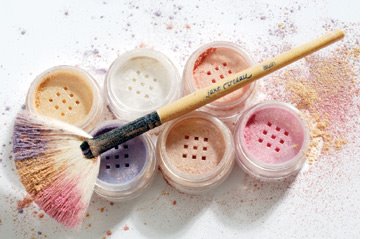As we age our feet change – and some of those changes can make wearing stilettos a lot more uncomfortable. Here’s what happens – and what you can do to comfortably cope. – By Colette Bouchez Perhaps no has ever worn stilettos better than the four fun-loving gals on Sex and The City. And none better than actress Kim Cattrall who portrayed the sexy, 50-something Samantha Jones on the show.
Perhaps no has ever worn stilettos better than the four fun-loving gals on Sex and The City. And none better than actress Kim Cattrall who portrayed the sexy, 50-something Samantha Jones on the show.
But in real life Cattrall has often been photographed with her designer stilettos dangling from her fingers, as she stumbles along the pavement on red, achy swollen tootsies.
And in fact, Sarah Jessica Parker recently remarked that part of the reason behind making the Sex and City movie now – as opposed to two years from now - had as much to do with the limited number of time they had left to successfully teeter around on those pricey Manolo Blahniks, as anything else.
And if you’re 40 or older, boy do you know how true that is! Indeed, the high heels you wore in your 20’s and 30’s somehow felt way more comfortable than anything you could wear today.
The reason: Experts say feet change with age, and at least some of those changes can turn even the most comfy high heels into killer foot wear.
"As you age, you lose some of the fatty deposits that normally protect the ball of the foot – and some of it also slides forward towards the toes, " says Morris Morin, DPM, director of podiatric medicine at the Hackensack University Medical Center.
The end result: As we slip our tootsies into those strappy stiletto sandals and step down, Morin says our weight is thrown precisely on the spot where we have the least protection.
"In extreme cases you actually have the bony ends of the foot grating down into the sole of the shoe with almost no protection at all," he says. Ouch!
Podiatrist Stuart Mogul, DPM says that by restricting the foot in a pointy toe high heel makes the problem worse. Indeed, putting weight on that restricted area then increases the risk of developing achy, painful bunions as well as corns and calluses.
“ Both the heel height and the point of the shoe can play a role, " says Mogul.
Moreover, our feet also get bigger as we age – and that can sometimes limit the type of shoes you can comfortably wear.
Indeed, if those narrow, high-heeled strappy sandals were a mainstay of your 20-something wardrobe, it’s likely this same style won’t feel the same on your chubby, wider 40-something foot.
“You have to remember to check your shoe size periodically – and dump the shoes that no longer fit,’” says Morin.
You may also have to look for shoes in a slightly different style, concentrating on shapes that reflect the current outline of your foot.
While most podiatrists are quick to dismiss high heels, claiming they’re bad news for women's feet, a recent study found they have at least one surprising benefit of particular interest to the 40-something gal: They might actually help tone your pelvic muscles and that in turn might help control some of the incontinence problems that occur with increasing age.
In a study published earlier this year in the journal European Urology, Italian researcher Dr. Maria Angela Cerruto found that high heels tilt a woman’s pelvis in a way that ultimately helps tone muscles in the abdomen and pelvis – in much the same way as the familiar Kegel exercise.
The study, which involved 66 women, revealed that standing with your feet at a 15 degree angle to the floor (about the same angle as a 3 inch heel) can reduce electrical activity in pelvic muscles – which says Cerruto indicates these muscles are more relaxed. This she says improves their strength and their ability to contract – and it is that ability that helps control mild incontinence in a way similar to what the Kegel can do.
High Heel SOS: 6 Tips To Feel Better Fast
With or without the pelvic benefits, if you love your high heels like I do, no amount of discomfort is going to convince you to give em up. At the same time, what good is that great pair of red patent leather stilettos if all you can do is sit and admire them?
So to help your feet look and feel better in high heels the experts I talked to offer this advice.
1. Buy shoes that fit. Sounds obvious, I know. But if you’re anything like me you have at least a half dozen pair of shoes in your closet right now that cause your feet to slide forward so far it leaves a thumb size gap of space behind your heel. Experts say this is indicative of an incorrect fit. Look for shoes with a narrow heel and a wider toe box to increase the chance of a better fit and take pressure off toes and the ball of the foot.
2. Invest in a good pair of insoles. If a full-length insert makes shoes too tight, try for a silicone pad for the ball of the foot, where the most pressure occurs.
3. Take advantage of the new thicker heels and oxford stilettos – the advantage being better stability and balance. This in turn will help keep pressure evenly distributed throughout your foot and take the painful focus off the ball of your foot.
4. Pay attention to the "slope" or "pitch" of the heel. The higher the heel, the more your foot is apt to slip forward, crushing your tootsies into the toe box. But what can also matter is the slope or “pitch” of your heel – the degree of the drop from the top of the heel to the flat part of the shoe. The more gradual the slope, say experts, the less your foot will slide forward. To check, turn the shoe sideways and just look at it- you’ll notice right away if the slope is a roller coaster pitch down, or a gentle sloping hillside.
5. Remember, feet get larger as you get older so if you’re having problems finding a shoe that’s comfortable, consider going up a half or even a whole size, or trying for a wider width. Ideally the ball of your foot should land in the widest part of the high heel. If it doesn’t – particularly if it’s pushed forward to where the shoe is narrower then try a smaller size, or a wider width.
Tuesday, September 30, 2008
High Heels & Mid Life Crisis: Why Your Feet Hurt
But before you wax too nostalgic for the shoes of your youth, there’s something you should know: Those same stylish slippers that let you dance the night away in 1980 would probably kill your feet today.
When High Heels Can Help
But Cerruto, a urologist, says there is a limit to what size heels can help you. Going too far over the 3-inch mark could have the opposite result, tilting your pelvis too far back and causing stresses that strain the muscles and might increase incontinence.
You might also enjoy reading:
Or visit RedDressDiary.com - The Destination for fabulous women over 40!
Subscribe to:
Post Comments (Atom)




































No comments:
Post a Comment